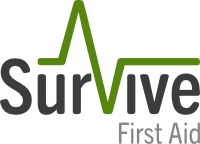ANZCOR Guideline 9.2.3 – SHOCK

Who does this guideline apply to?
This guideline applies to adult, child and infant victims.
Who is the audience for this guideline?
This guideline is for use by bystanders, first aiders and first aid providers.
1 Introduction
Shock is a loss of effective circulation resulting in impaired tissue oxygen and nutrient delivery^1 and causes life threatening organ failure.
2 Causes
Some conditions which may cause shock include^2 :
2.1 Loss of circulating blood volume (hypovolaemic shock), e.g.:
- severe bleeding (internal and / or external)
- major or multiple fractures or major trauma
- severe burns or scalds
- severe diarrhoea and vomiting
- severe sweating and dehydration.
2.2 Cardiac causes (cardiogenic shock), e.g.:
- heart attack
- dysrhythmias (abnormal heart rhythm).
2.3 Abnormal dilation of blood vessels (distributive shock), e.g.:
- severe infection
- allergic reactions
- severe brain / spinal injuries
- fainting.
2.4 Blockage of blood flow in or out of heart (obstructive shock), e.g.:
-
tension pneumothorax
-
cardiac tamponade
-
pulmonary embolus
-
in pregnancy, compression of large abdominal blood vessels by the uterus.
3 Recognition
The symptoms, signs and rate of onset of shock will vary widely depending on the nature and severity of the underlying cause^3. Shock is a condition that may be difficult to identify.
3.1 Symptoms may include:
- dizziness
- thirst
- anxiety
- restlessness
- nausea
- breathlessness
- feeling cold.
3.2 Signs may include:
- collapse
- rapid breathing
- rapid pulse which may become weak or slow
- cool, sweaty skin that may appear pale
- confusion or agitation
- decreased or deteriorating level of consciousness
- vomiting.
4 Management
- Place the victim in the supine position. If victim is unconscious place victim on side (Guideline 3).
- Control any bleeding promptly (Guideline 9.1.1).
- Call an ambulance.
- Administer treatments relevant to the cause of the shock.
- Administer oxygen if available and trained to do so (Guideline 10.4).
- Maintain body temperature (prevent hypothermia).
- Reassure and constantly re-check the victim’s condition for any change.
- If the victim is unresponsive and not breathing normally, follow the Basic Life Support Flowchart (ANZCOR Guideline 8).
4.1 Positioning of victims with shock
Place individuals with shock in the supine position as opposed to the upright position^4 (CoSTR 2015, weak recommendation, low-quality evidence).
For individuals with shock who are in the supine position and with no evidence of trauma, the use of PLR (passive leg raise) may provide a transient (less than 7 minutes) improvement.
The clinical significance of this transient improvement is uncertain; however, no study reported adverse effects due to PLR^4. Because improvement with PLR is brief and its clinical significance uncertain, ANZCOR recommends the supine position without leg raising for victims in shock^4 (CoSTR 2015, values and preferences statement).
References
- Skinner, B. & Joans, M. (2007). Causes and Management of Shock. Anesthesia and Intensive Care Medicine. 8 (12): 520-524.
- Graham, C.A. & Parke, T.R. (2005). Critical care in the emergency department: shock and circulatory support. Emergency Medicine Journal. 22 :17-21.
- Moore, F.A., McKinley, B.A. & Moore, E.E. (2004). The next generation in shock resuscitation. The Lancet 363: 1988-96.
- Zideman, D. A., Singletary, E. M., De Buck, E.,et al. (2015). Part 9: First aid: 2015 International Consensus on First Aid Science with Treatment Recommendations. Resuscitation, 95 , e225. http://www.cprguidelines.eu/assets/downloads/costr/S0300- 9572(15)00368-8_main.pdf Accessed 19/11/2015.
